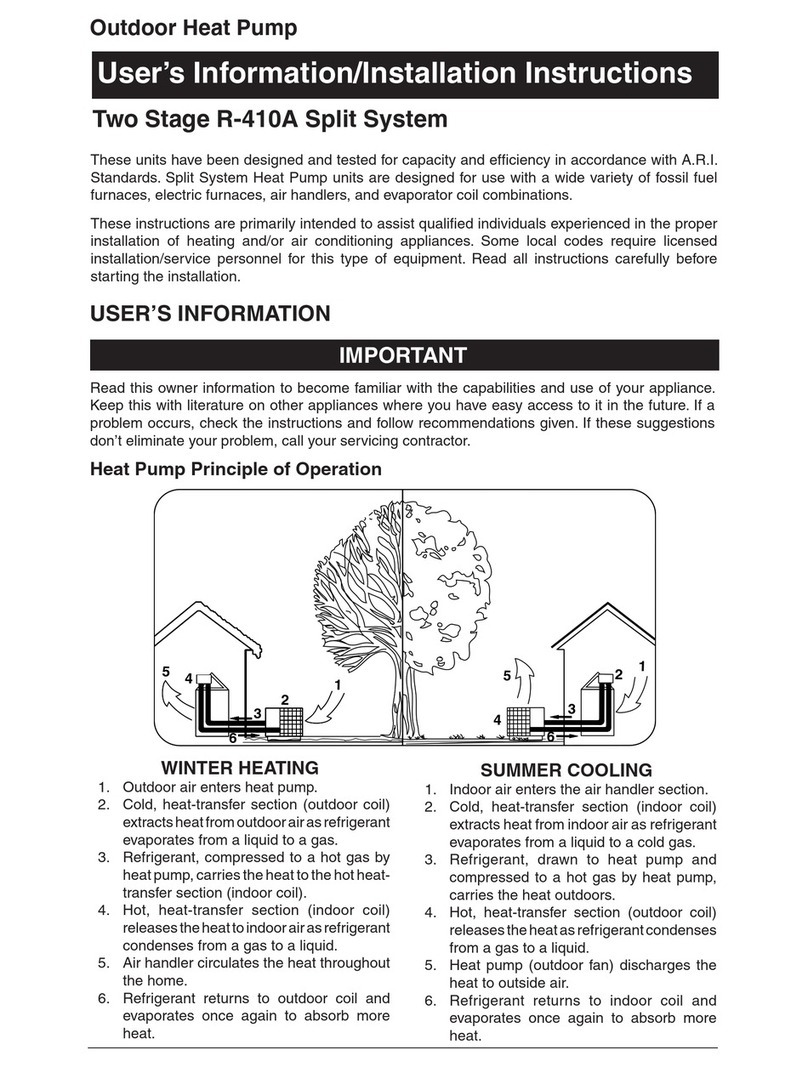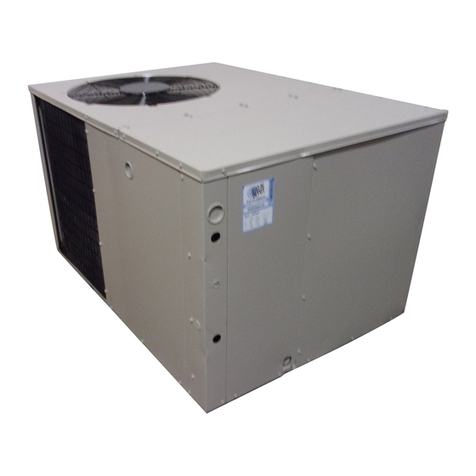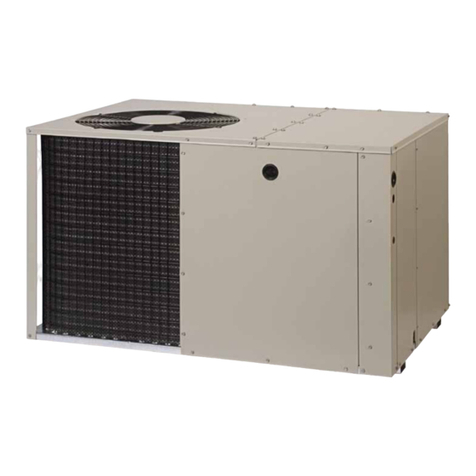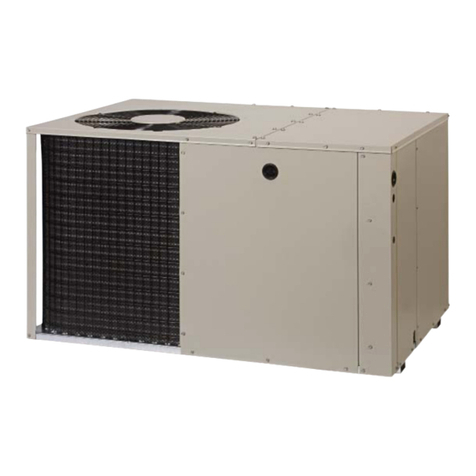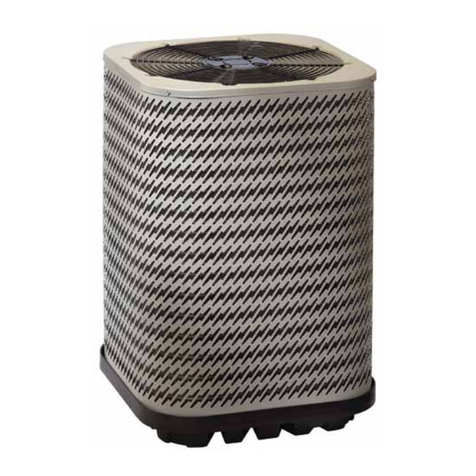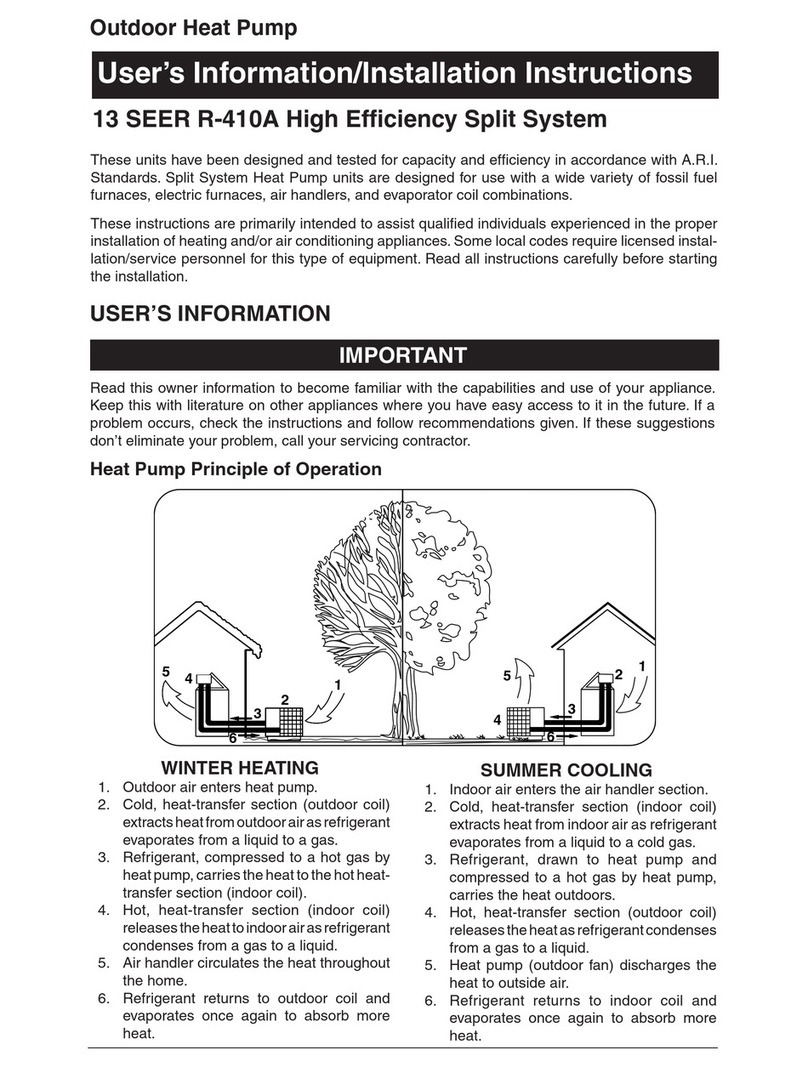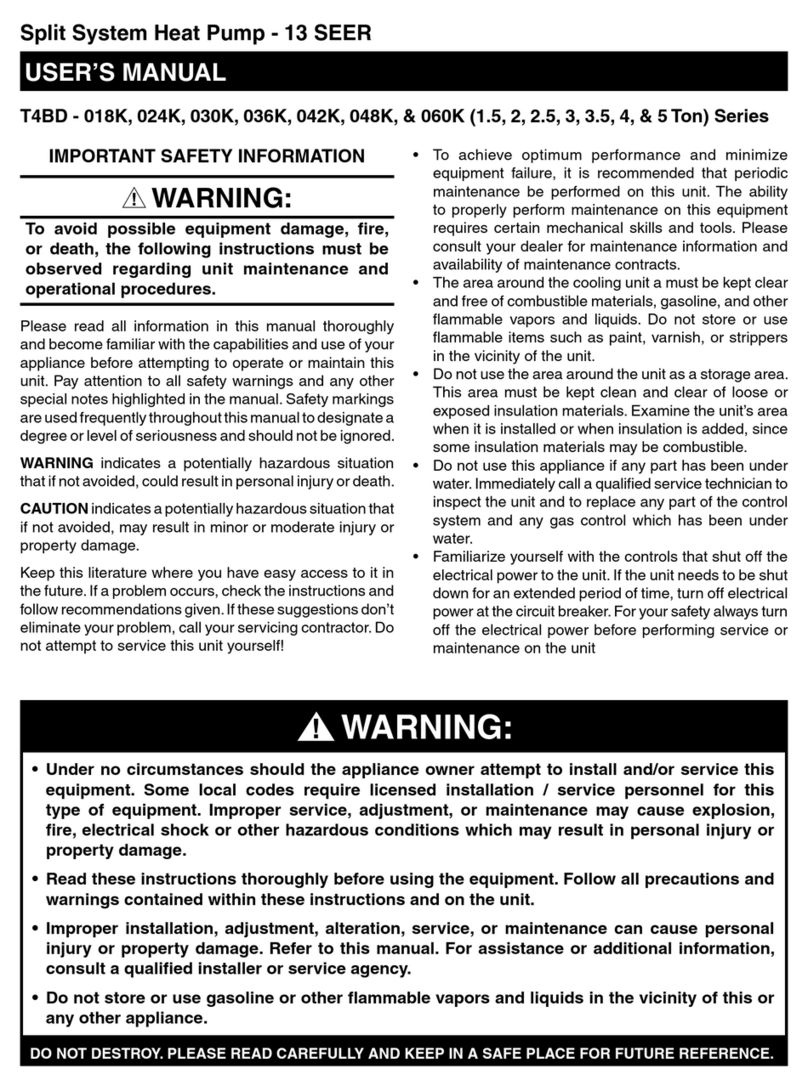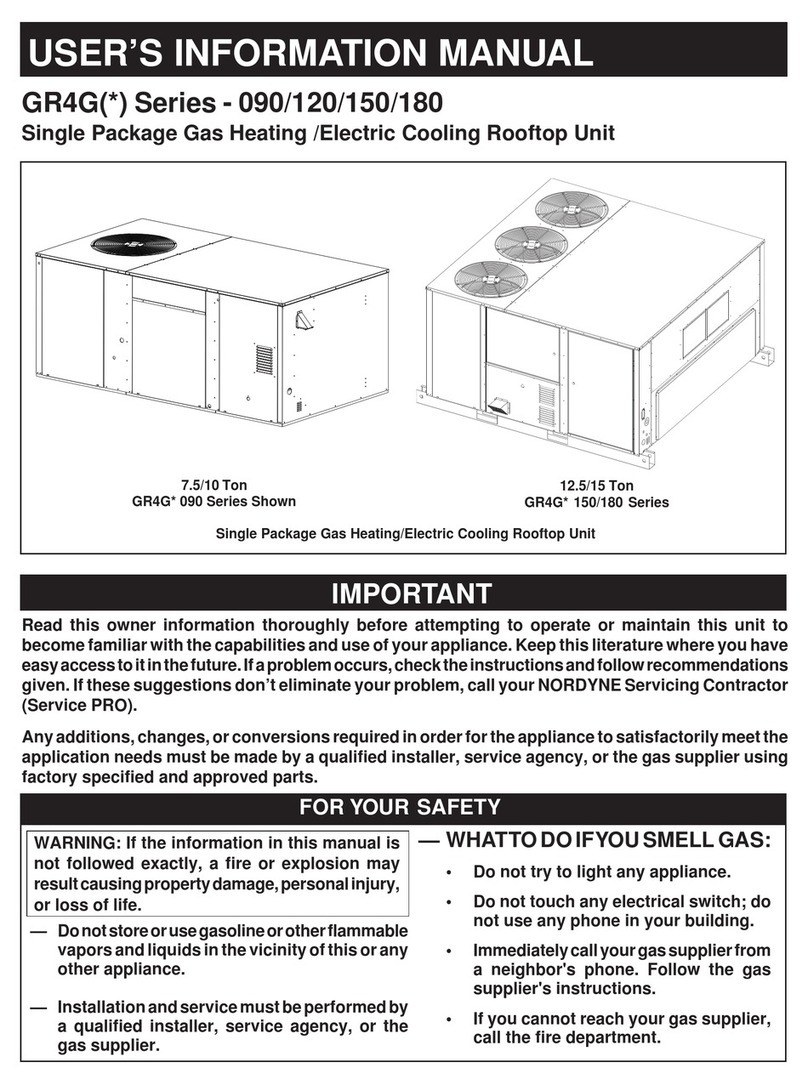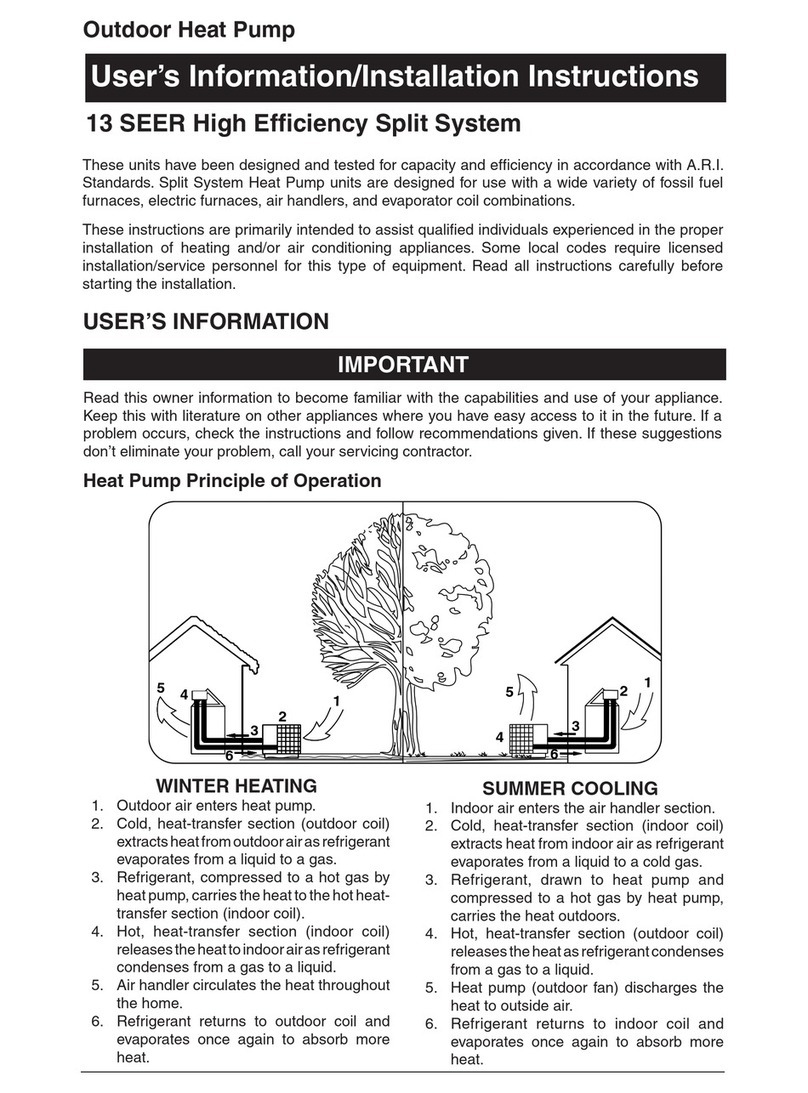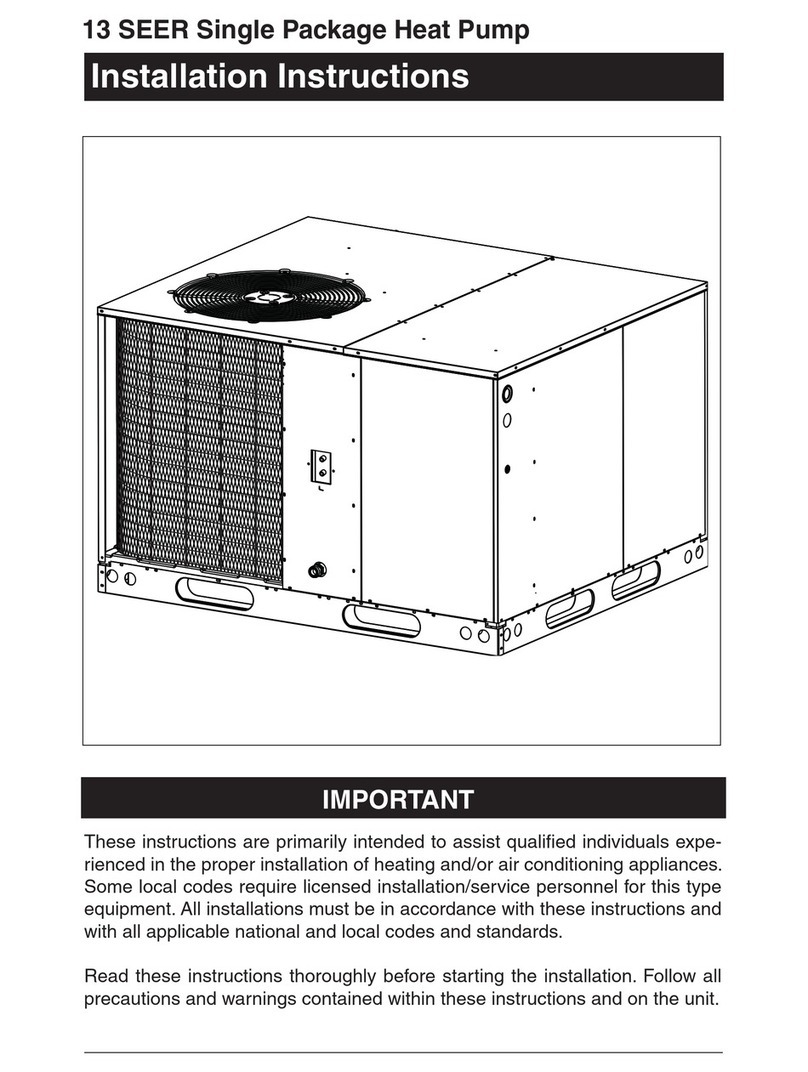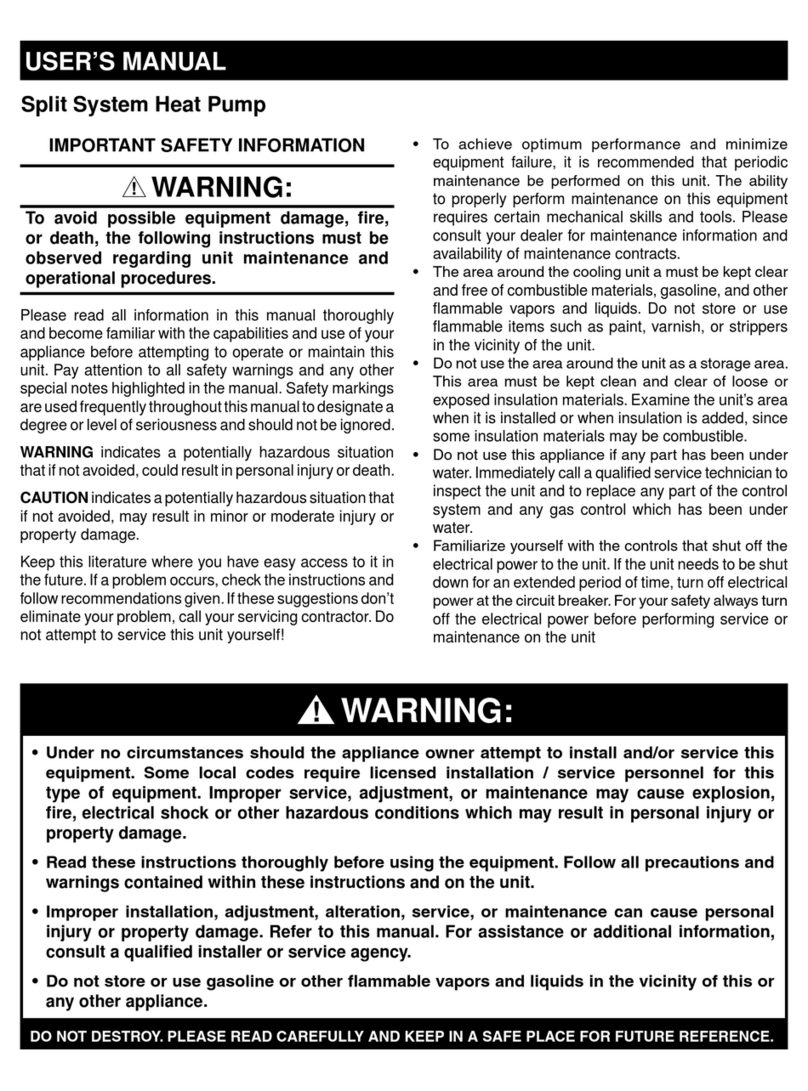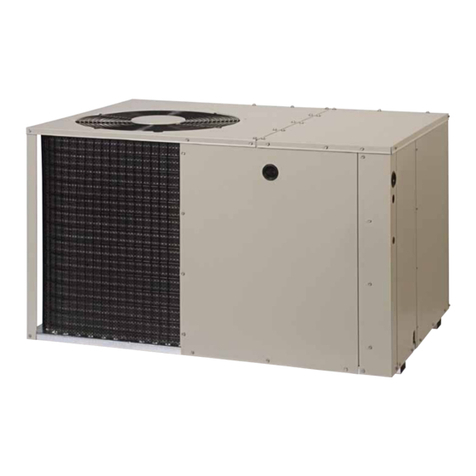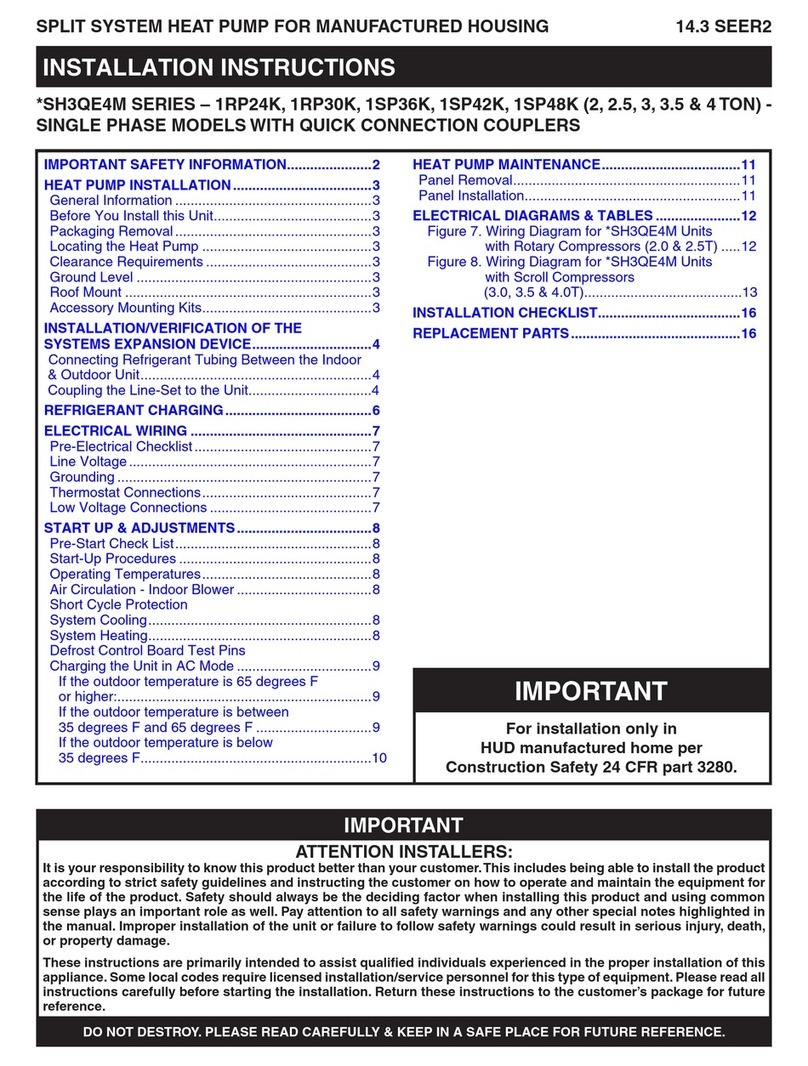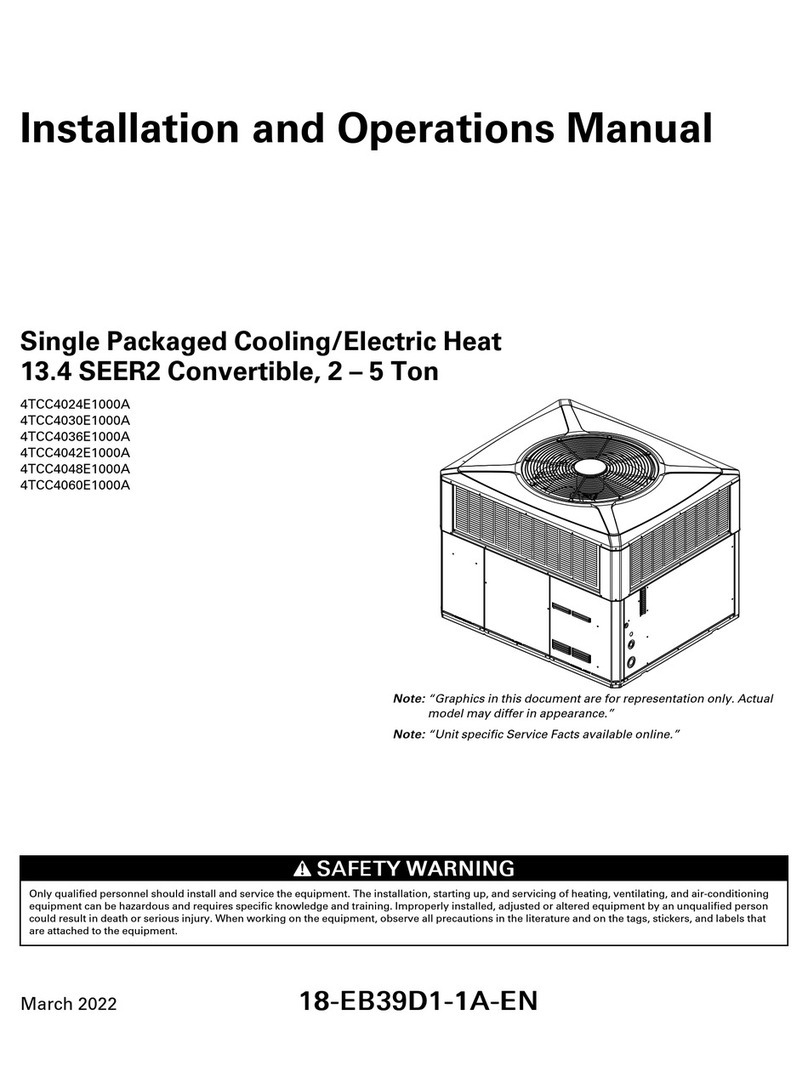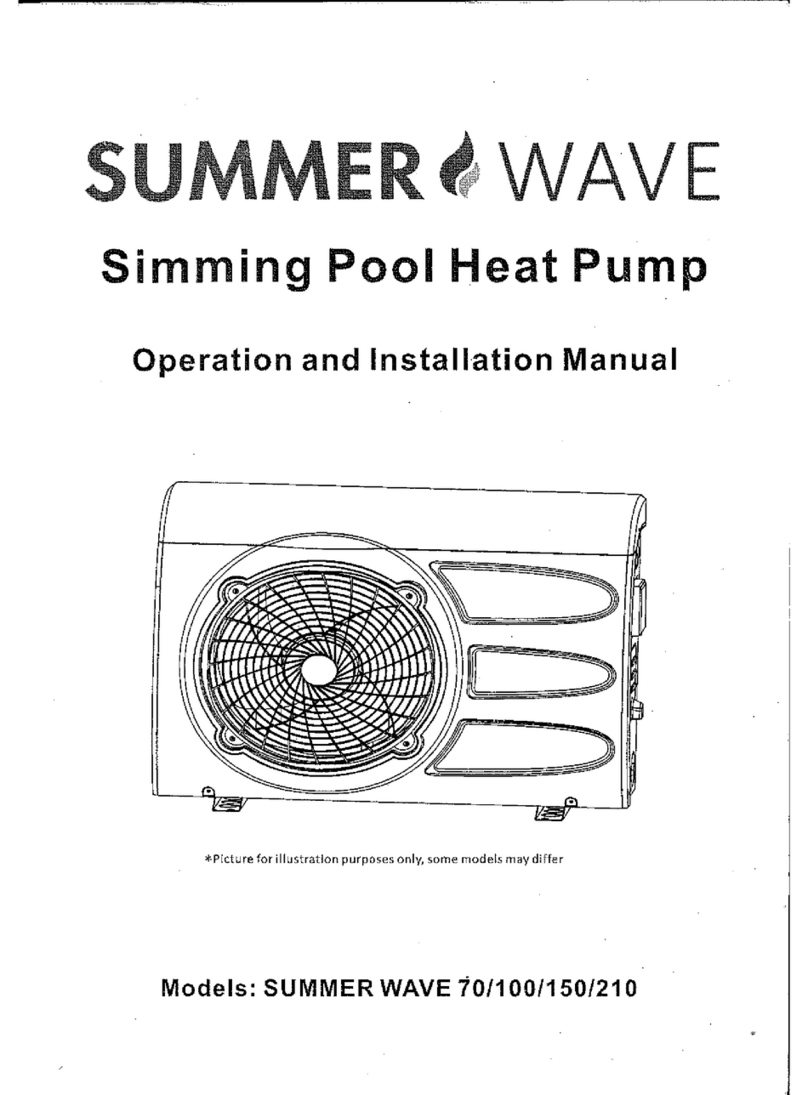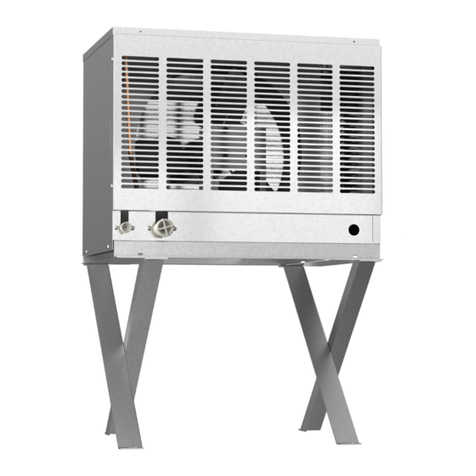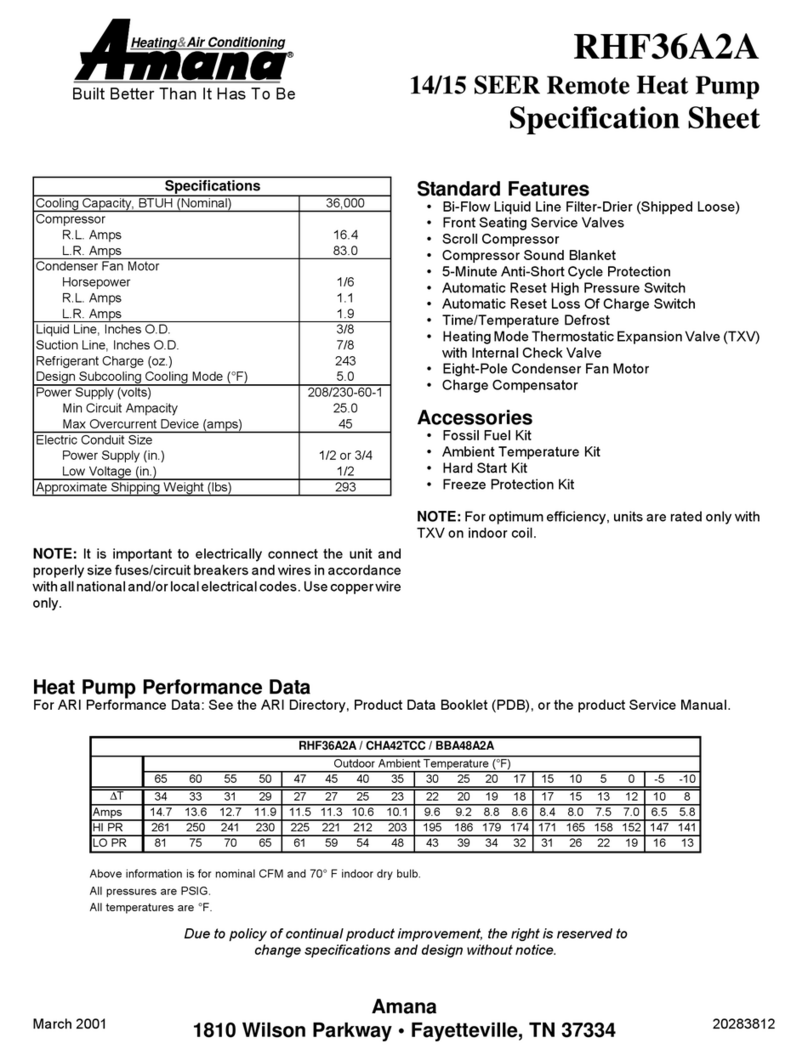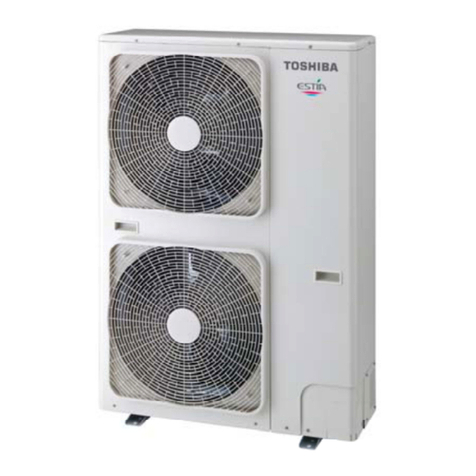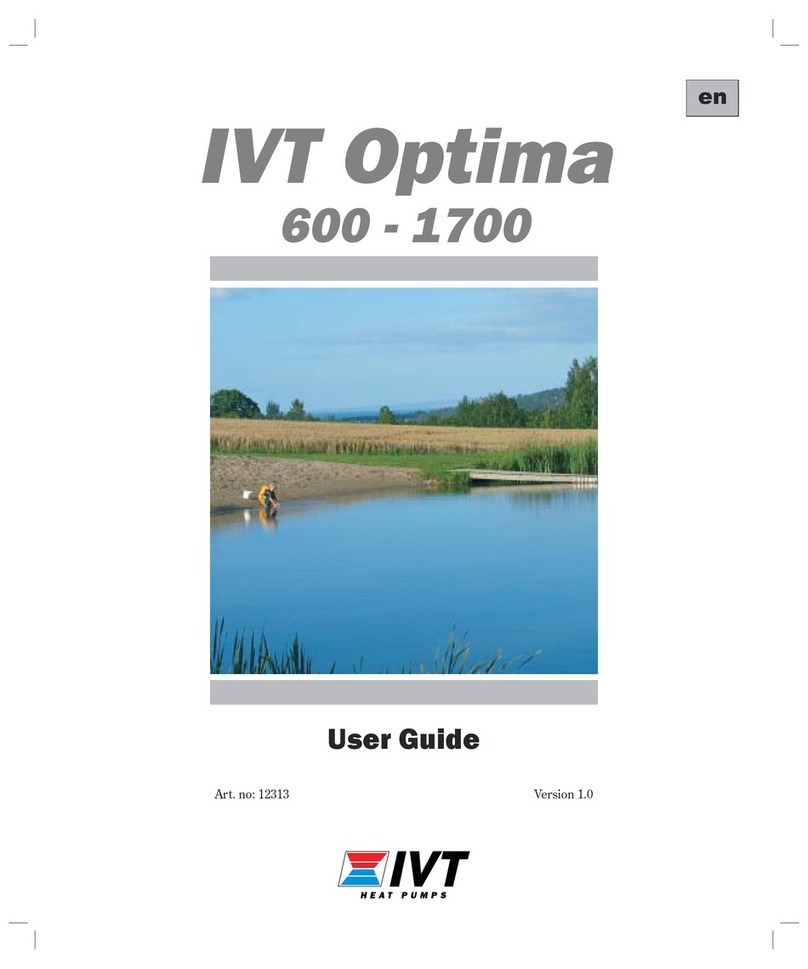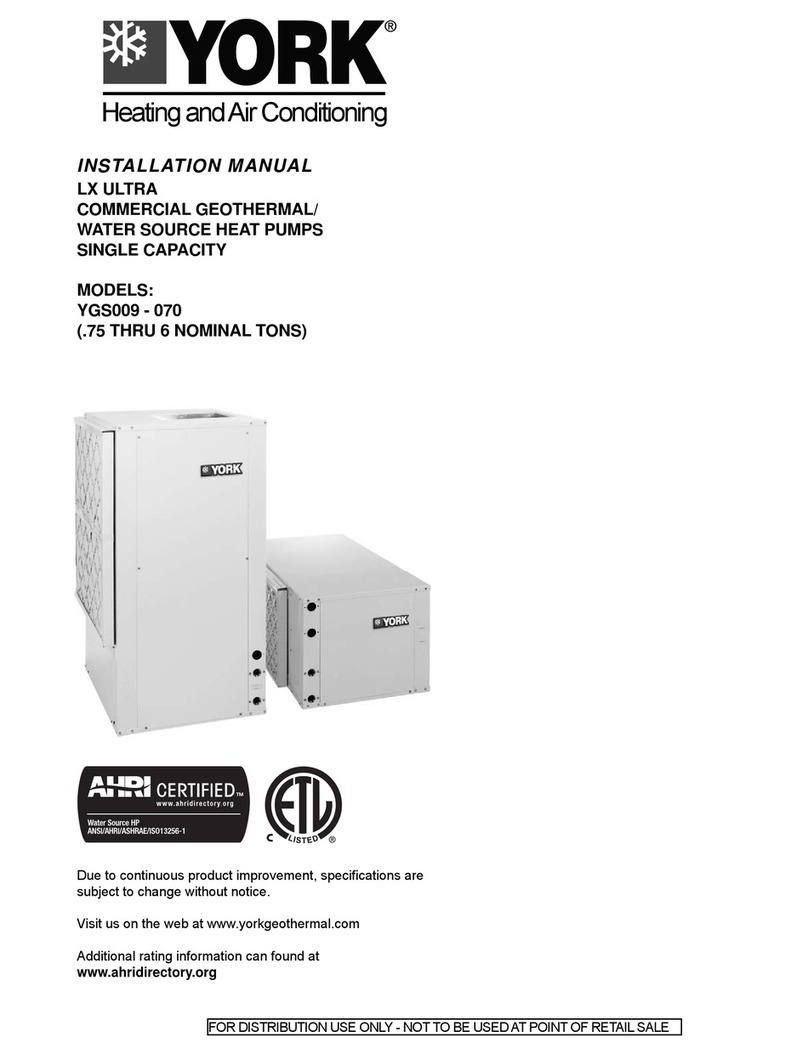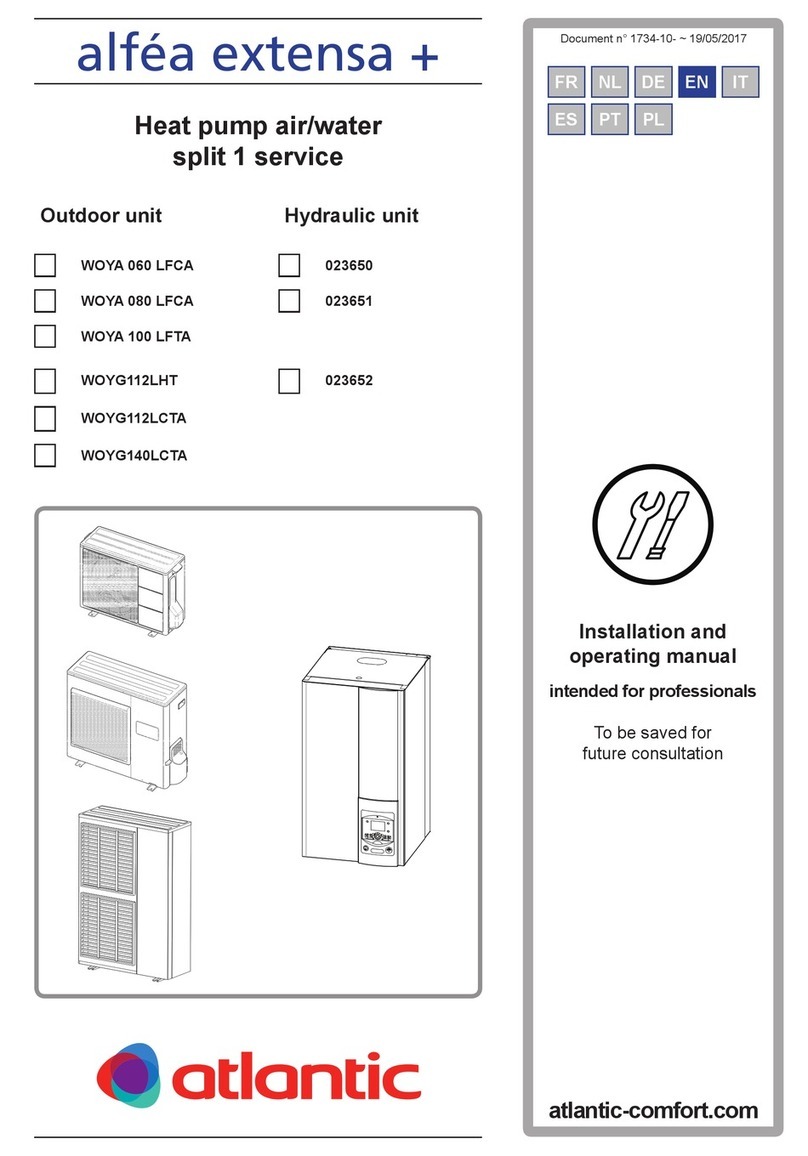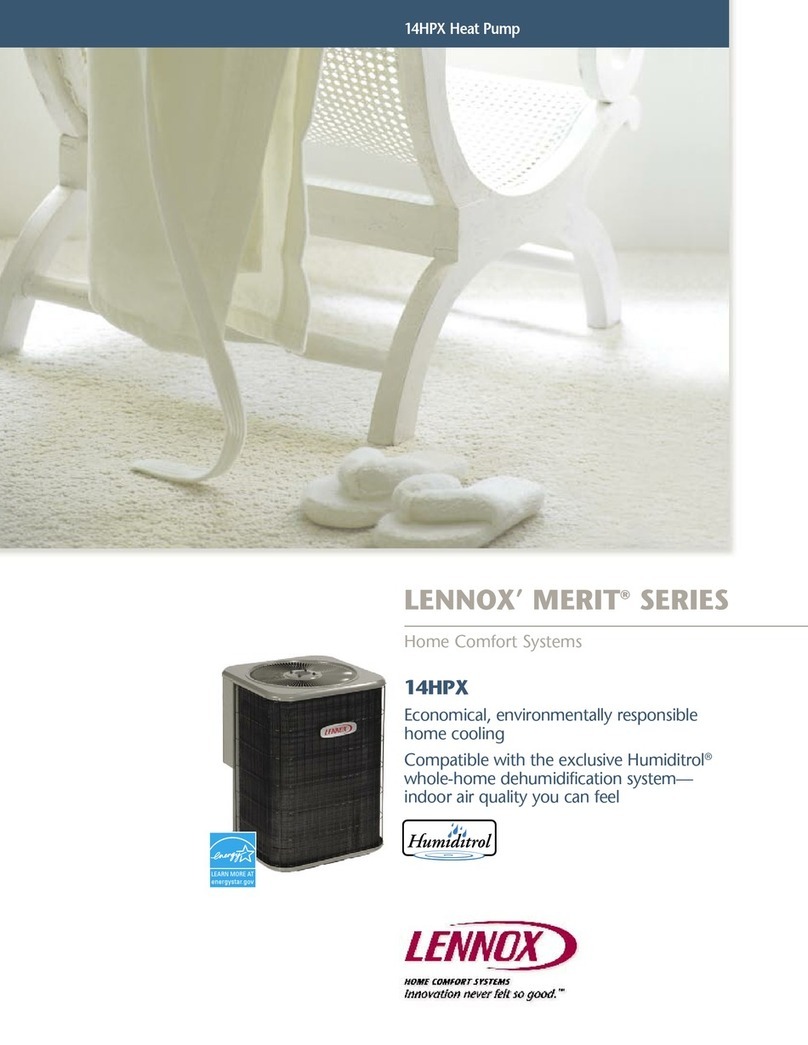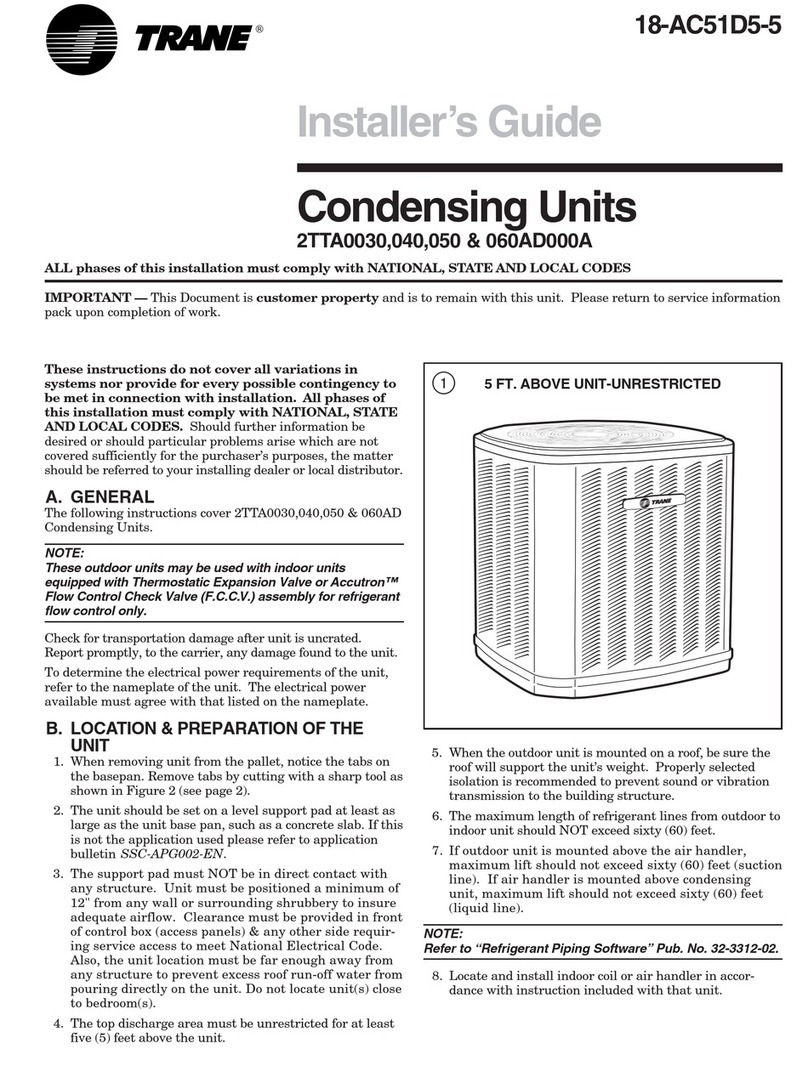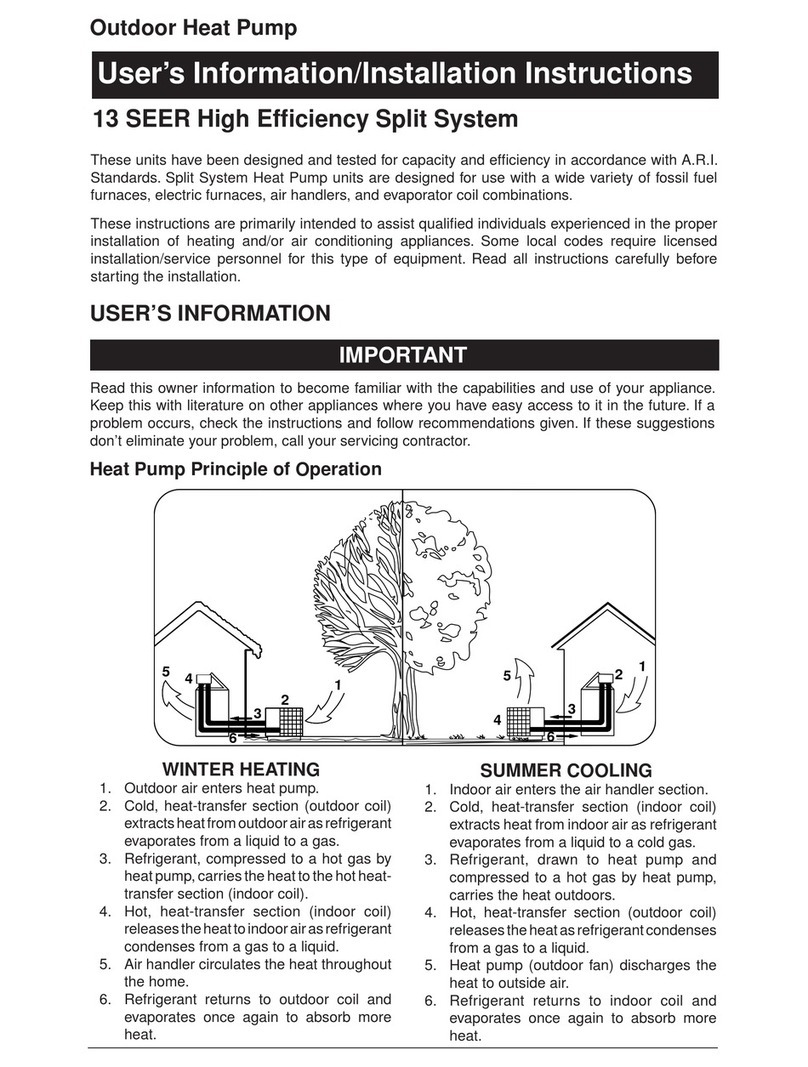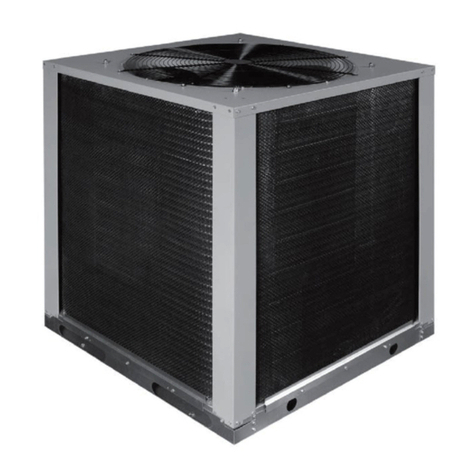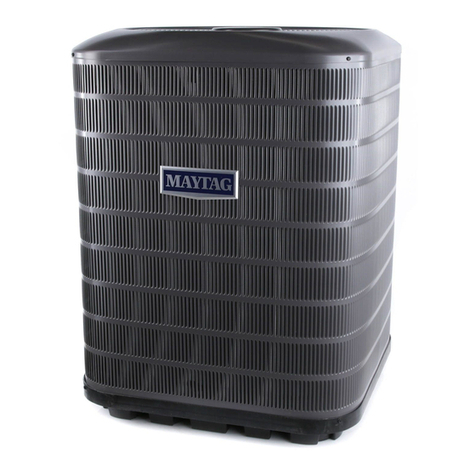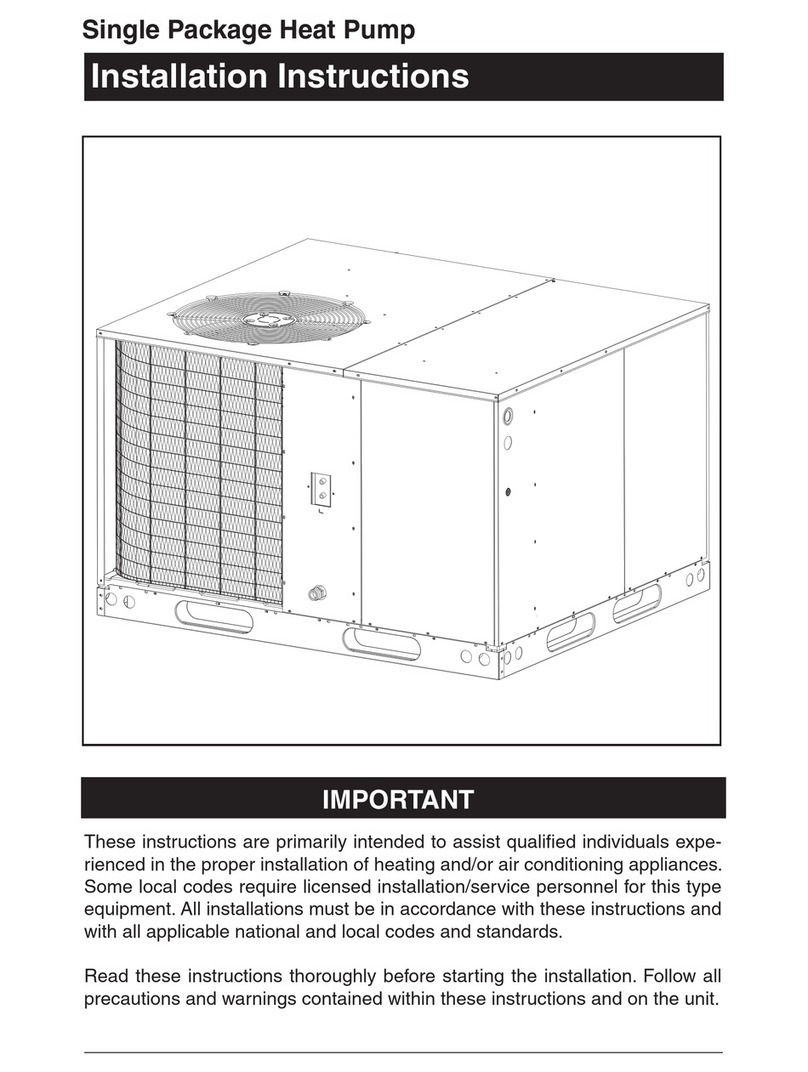
8
back to AUTO.Blower will operate at a decreased
speed on continuous fan.
2-Speed Outdoor Fan Motor (Select
Models) — If unit utilizes a 2-speed condenser
fan motor, this motor will operate on low speed
when in low cooling, and on high speed when
in high cooling. A relay within the control area
switches the fan motor from low to high speed
using the call for high cooling as the trigger.
Low-Pressure Switch — A low-pressure switch
is factory-installed and located in the suction
line internal to the outdoor unit. The switch is
designed to protect the compressor from a loss
of charge. Under normal conditions, the switch
is closed. If the suction pressure falls below 5
psig, then the switch will open and de-energize
the outdoor unit. The switch will close again
once the suction pressure increases above 20
psig. Please note that the switch interrupts the
thermostat inputs to the unit. Thus, when the
switch opens and then closes, there will be a 5
minute short cycling delay before the outdoor
unit will energize.
High-Pressure Switch — A high-pressure switch
is factory-installed and located in the compressor
discharge line internal to the outdoor unit. The
switch is designed to de-energize the system
when very high pressures occur during abnormal
conditions.Under normal conditions, the switch is
closed.If the discharge pressure rises above 650
psig, then the switch will open and de-energize
the outdoor unit. The switch will close again
once the discharge pressure decreases to 460
psig. Please note that the switch interrupts the
thermostat inputs to the unit. Thus, when the
switch opens and then closes, there will be a 3
minute short cycling delay before the outdoor
unit will energize.
Short Cycle Protection — With the system
operating in COOLING mode, note the setpoint
temperature setting of the thermostat, and
gradually raise the setpoint temperature until
the outdoor unit and indoor blower de-energize.
Immediately lower the setpoint temperature of
the thermostat to its original setting and verify
that the indoor blower is energized and that the
outdoor unit remains de-energized. Verify that,
after approximately 3 minutes, the outdoor unit
energizes and that the temperature of the air
supplied to the facility is cooler than ambient
temperature.
Comfort AlertTM Diagnostics — The Comfort
AlertTM diagnostics module is a breakthrough
innovation for troubleshooting heat pump and
air conditioning system failures. The module
installs easily in the electrical box of the
outdoor unit near the compressor contactor.
By monitoring and analyzing data from the
Copeland scroll compressor and the thermostat
demand, the module can accurately detect the
cause of electrical and system related failures
without any sensors. A flashing LED indicator
communicates the ALERT code and guides the
service technician more quickly and accurately
to the root cause of a problem.
NOTE: This module does not provide safety
protection! The Comfort AlertTM module is a
monitoring device and cannot control or shut
down other devices.
LED Description (See Figure 1)
POWER LED (Green): indicates voltage
is present at the power connection of the
module.
ALERT LED (Yellow): communicates an
abnormal system condition through a unique
flash code.The ALERT LED will flash a number
of times consecutively, pause and then repeat
the process. The number of consecutive
flashes, defined as the Flash Code, correlates
to a particular abnormal condition. Detailed
descriptions of specific ALERT Flash Codes are
shown in Table 1 of this manual.
TRIP LED (Red): indicates there is a demand
signal from the thermostat but no current to the
compressor is detected by the module.TheTRIP
LED typically indicates the compressor protector
is open or may indicate missing supply power
to the compressor.
The scroll compressor’s run (R), common (C) and
start (S) wires are routed through the holes in
the Comfort AlertTM module marked “R,” “C” and
“S.”The common (C) need not be routed through
the module for it to operate properly.
24 VAC Power Wiring — The Comfort AlertTM
module requires a constant nominal 24 VAC
power supply. The wiring to the module’s R and
C terminals must be directly from the indoor unit
or thermostat.The module cannot be powered by
the C terminal on a defrost board or other control
board without experiencing nuisance alerts.
















